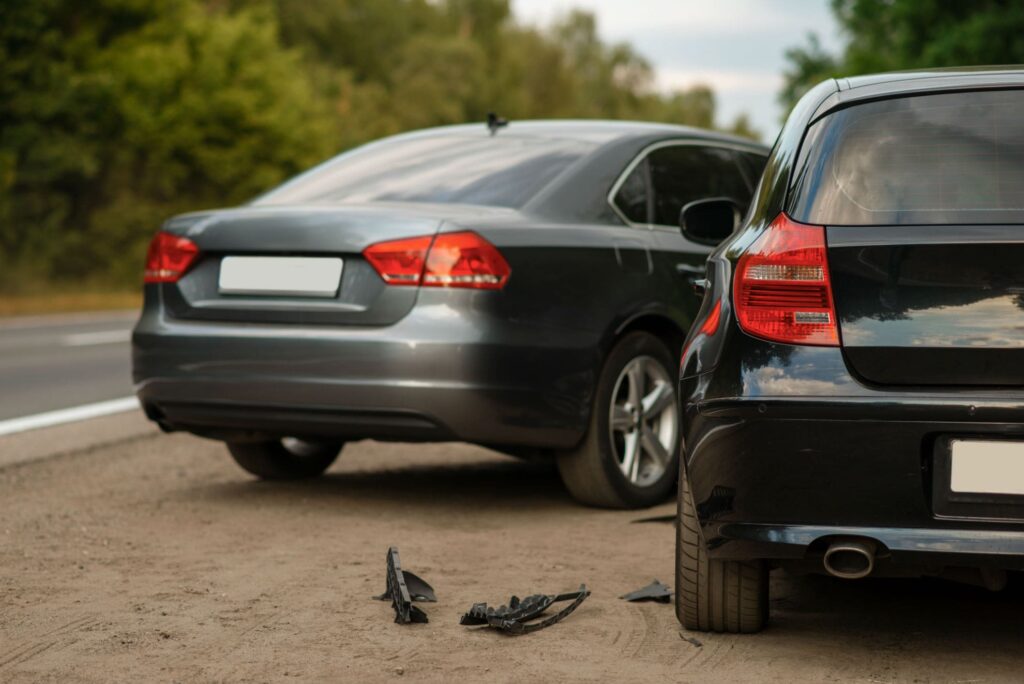 The sentence must specify which of these violations were causally related to the occurrence of the consequences provided for in Art. 286 of the Criminal Code, and which of them were only conditions that contributed to them.
The sentence must specify which of these violations were causally related to the occurrence of the consequences provided for in Art. 286 of the Criminal Code, and which of them were only conditions that contributed to them.
Circumstances of the case: according to the court's verdict, PERSON_1 was found guilty and sentenced for the fact that he, driving a car, moving at a speed of at least 65.5 km/h, approaching an unregulated pedestrian crossing, violated the requirements of clause 12.4, clause "b" clause 12.9, clause 18.1 of the Road Traffic Act, having an objective opportunity to detect the pedestrian crossing and pedestrians in a timely manner, did not reduce the speed of movement until the vehicle stopped and did not give priority to the movement of the pedestrian PERSON_4, who was crossing the carriageway of the road on an unregulated pedestrian crossing, as a result of which he ran over the victim. As a result of the road accident, the victim PERSON_4 received severe life-threatening injuries that are directly causally related to her death. Violation by the driver PERSON_1 of the requirements of clause 18.1 of the Road Traffic Act is directly causally related to the occurrence of an accident.
Positions of the courts of the first and appellate instances: according to the verdict of the local court, PERSON_1 was found guilty of committing a criminal offense provided for in Part 2 of Art. 286 of the Criminal Code. On the basis of Art. 75 of the Criminal Code, he was released from punishment with probation.
The appellate court overturned the verdict of the local court and issued its own, which imposed a different punishment on the convicted person compared to the verdict of the local court. In the other part, this sentence was left unchanged.
One of the arguments in the cassation appeal of the defender was that the reference in the decision of the appeals court to PERSON_1's violation of three clauses of the Road Traffic Act testifies to an incorrect investigation of the circumstances in the case.
The position of the CCS: the verdict of the appellate court was left unchanged.
Justification of the position of the CCS: the panel of judges of the CCS considers the above-mentioned arguments in the cassation appeal unfounded.
During the consideration of criminal proceedings, the court is obliged to identify, establish and indicate in the motivational part of the sentence the violations of traffic rules that occurred during a specific traffic accident, but at the same time it must clearly indicate in the sentence which of these violations were the cause of the consequences provided for in Article . 286 of the Criminal Code, that is, were in a causal relationship with them, and which of these violations performed only the function of the conditions that contributed to them.
According to the materials of the criminal proceedings, the court of first instance, with whose decision the appellate court also agreed, found that PERSON_1 violated the requirements of clause 12.4, paragraphs. "b" Clause 12.9, Clause 18.1 of the Road Traffic Act.
Thus, the traffic regulations stipulate that in populated areas the movement of vehicles is allowed at a speed of no more than 50 km/h (paragraph 12.4); the driver is prohibited from exceeding the maximum speed specified in clauses 12.4–12.7, on the road section where road signs 3.29, 3.31 are installed, or on a vehicle on which a recognition sign is installed in accordance with paragraphs "i" clause 30.3 of these Rules (clause "b" clause 12.9); the driver of a vehicle approaching an unregulated pedestrian crossing where there are pedestrians must reduce speed and, if necessary, stop to give way to pedestrians for whom an obstacle or danger is created (clause 18.1).
The court stated that the violation by the driver of PERSON_1 of the requirements of Clause 18.1 of the Traffic Code is directly causally related to the occurrence of the road accident and its consequences in the form of the death of PERSON_4.
Taking into account the above, the court clearly stated in the verdict which of the violations of traffic regulations caused the consequences provided for in Part 2 of Art. 286 of the Criminal Code, that is, were in a causal relationship with them, and which could only contribute to the violation of the rules that caused the consequences.
Thus, the indication in the verdict of the appellate court about PERSON_1's violation of three points of the traffic rules details, clarifies, specifies the criminal act committed by the convicted person and his public danger.
You can read more about the text of the resolution dated November 10, 2021 in case #337/2655/20 (proceedings #51-2235км21) at https://reyestr.court.gov.ua/Review/101100251 .



